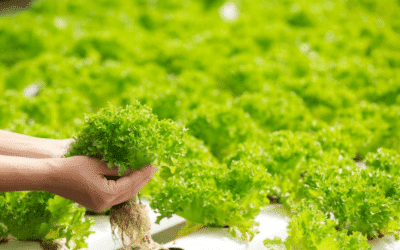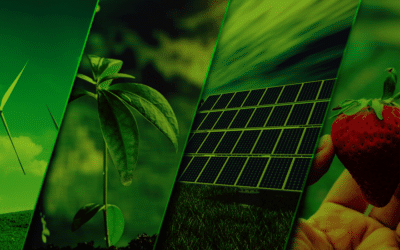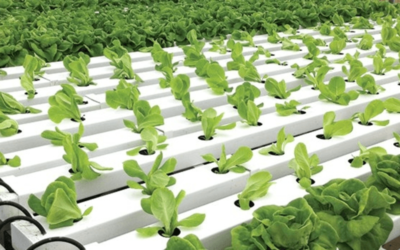Eco friendly living homes are not the norm. Homeowners are however slowly realising that green smart homes are sound investments. They have significant advantages over traditional homes that will become important as the years go by. If you’re unaware or unconvinced that investing in eco friendly living homes is a wise move, here are some reasons why greener and eco friendly living is a smart move.
Eco friendly living homes have a longer lifespan
Would it surprise you to learn that green smart homes age better than traditional homes? That’s because eco friendly living building materials are tougher. For example, steel beams equip a home with a solid frame that is much stronger than wood. As a result, green smart homes can withstand high winds without damage. And steel beams aren’t at risk from rot or termites.
Even natural, sustainable construction materials are treated so that they last as long. In order to minimise waste, green and eco friendly living demands that every element of a home is used to maximum effect.
Green smart homes are healthier
Paints, adhesives, upholstery, carpets and other materials all emit Volatile Organic Compound (VOCs) into your home environment. You may not be aware of it, that breathing in these dangerous chemicals can affect your health. They are responsible for a variety of conditions that range from mild to serious. One thing is certain; being exposed to these VOCs for long periods of time result in being more susceptible to illness.
On the other hand, green and eco friendly living focuses on using eco friendly products that are non-toxic and not harmful to the environment or people. Low VOC paints, varnishes and adhesives are available and used in the construction of eco friendly living houses. Wooden flooring is an alternative to carpets. Even tiles made from recycled materials are available to ensure that green and eco friendly living principles are followed throughout the construction of a home.
The result is that green smart homes have a better air quality. And good air quality reduces risk of illness and allergies. It’s difficult to imagine that a home could be a source of becoming sick, though those living in eco friendly living homes know that being environmentally conscious makes a difference to their health.
Eco friendly living houses are more valuable
Should the time ever come to sell, green smart homes command more money. As the trend towards greener and eco friendlier living gains popularity, buyers will be on the look-out for eco friendly living homes. Features such as photovoltaic solar panels, comprehensive insulation and a rainwater harvesting system make such homes attractive to eco-conscious buyers.
It’s these features that make green smart homes comfortable. Green and eco friendly living is about modern conveniences, about luxury living. Photovoltaic solar power and rainwater harvesting means efficient access and use of two important resources. Why be solely dependent on the grid for electricity when it’s easy to generate electricity. And the same with water, why be solely dependent on municipal water, when it’s easy to harvest rainwater.
When compared to traditional homes, taking the benefits of the aforementioned translated into monthly savings, and that green smart homes are fully temperature controlled throughout the year, and that the temperature of each zone is individually adjustable, it stands to reason that eco friendly living homes are valuable assets.
Green smart homes are cheaper to run
One of the noteworthy points of eco friendly living houses is their low running costs. Other points are their convenience and benefits to the environment. In fact, living green and eco friendly saves a substantial amount of money. In comprehensive tests, calculated savings of up to 65% can be achieved – that is – including the Hydronics Radiant heating and cooling – registering better than optimal temperatures during the tests in summer and winter.
Harvesting rainwater reduces monthly water costs by as much as 60% averaged over the year. Installing a solar water heater reduces water usage slightly and saves electricity based on usage patterns. Using photovoltaic solar electricity to power a home reduces electricity costs by almost by 100%.
Even small actions result in big savings over time. For example, switching to Compact Fluorescent Lights (CFLs) reduces electricity consumption immediately. Green and eco friendly living is about finding efficient ways to achieve things.
And with costs of basic services such as electricity, water and refuse removal continuously increasing, living in a green smart home makes solid economic sense.
Eco friendly living homes are attractive
Homes fitted with green technology is not unattractive. When building eco friendly living homes from scratch, designers and developers find ways to incorporate green features so they don’t stand out. Photovoltaic solar panels are indeed visible. And large rainwater harvesting tanks are usually installed underground and out of sight. It’s even possible that an eco friendly living home isn’t distinguishable unless told.
Very often, the natural materials used to decorate eco friendly living homes are as beautiful as traditional materials. Bamboo floors and countertops add a touch of luxury to any home. Recycled materials that have been re-purposed have a charm of their own. Finding eco friendly tiles, paints or finishing’s to decorate interior spaces are easy to find. More suppliers are recognising the demand for green and eco friendly living alternatives.
All that is needed is educating about these choices and asking manufacturers the right questions. Take into account how products are sourced and handled and to decide whether they match green and eco friendly living principles.
Green smart homes keep working during shortages
There’s nothing worse than arriving home after a long day to discover a power or water outage. With a green smart home, this won’t be the case often. Even during rolling black-outs, cooking, having a hot shower and lighting the home continues. Investing in back-up batteries to store the power generated by the photovoltaic solar panels, though expensive, provides power when needed.
Likewise, rainwater harvesting tanks supply water as designed even when the municipal supply is turned off. Or, if water restrictions are instituted, rainwater is likely available from the previous rains for flushing the toilets and irrigation.
These are examples of how green and eco friendly living make life easier. Being self-sufficient enables the use of resources as implemented for the home. And reduces the impact of price increases for power and water. In a green smart home, it is easy to monitor and manage usage to retain basic comforts.
Eco friendly living homes are the future
The idea of building sustainable homes has already taken off in many parts of the world. Designers and builders are constantly coming up with innovative ways to build homes that work with the environment and use limited resources efficiently.
At the same time, more homeowners are becoming aware of how green and eco friendly living saves money. Swapping out old lightbulbs for more cost-efficient CFLs or buying a geyser blanket, is beneficial to our pockets and the environment. These are small aspects of being eco friendly. Image implementing green features comprehensively.
If you’re in a position to buy a purpose-built eco friendly living home, don’t hesitate. It’s worth the investment. Not only will you save on your monthly costs, you’ll be investing in the future. An eco friendly living home is a home for life. You’re investing in a home that will last you well into your retirement, a home that you can leave to your children.
Green smart homes are better for the environment
It’s worth stating this advantage again. The benefits of eco friendly living homes extend well beyond the construction phase. As time goes on, green smart homes continue to reduce impact on the planet: Using less resources and releasing fewer toxins into the environment.
Although the full impact of current habits is yet to be felt, by adopting green and eco friendly living habits, we’re contributing to an improved environment. Few people appreciate how uncomfortable life would become if steps aren’t taken to stop pollution or reduce the consumption of precious resources.
Greener and eco friendlier living doesn’t require much. It requires changing just a few habits, and we stand to benefit as much as the planet does. Being committed to leaving our children and grand-children with a bright future, we’ll need to take action, rather sooner than later.
As is evident, there are many reasons to invest in a green smart home. In the future, eco friendly living homes will be in demand. Be an early adopter. Start saving money and reducing your impact on the environment.
What to look for in a green smart home?
If you’ve already decided that your next home should be a green smart home, here are some features to look out for when you go house hunting:
- Comprehensive insulation
One important feature of eco friendly living houses is how well they’re insulated. Retrofitting an existing home with ceiling insulation is not enough. An eco friendly living home will have:
- Ceiling insulation
- Floor insulation
- Exterior wall insulation
- Double-glazed windows
- Water pipe insulation
A home that is properly insulated will significantly reduce your cooling and heating costs. An underfloor Hydronics Radiant heating and cooling system will eliminate your need for heaters and air-conditioners. You’ll be able to control the temperature in separate zones for maximum comfort all year round without using much electricity.
Being well insulated contributes to sound proofing the home.
- Rainwater harvesting tanks and a water-wise garden
All eco friendly living homes have some kind of rainwater harvesting system. Whether tanks are installed underground or above ground, a pump and filter enables using harvested rainwater inside and outside.
Combined with a garden that features indigenous plants, water usage is minimal. And the harvested rainwater is available to flush your toilets and supply the washing machine.
- Heat pump or solar geyser
Both options provide you with hot water. Not only does this make eco friendly living homes more comfortable and convenient, it saves on water and electricity. With a linked-loop system, hot water is immediately on tap, reducing the need to run the water until it reaches the right temperature.
- Photovoltaic solar panels and backup batteries
For the full green and eco friendly living experience, include photovoltaic electricity. Reducing dependence on the grid provides massive savings on monthly bills. Backup batteries ensure that electricity is available during the evening when the sun is down.
- Eco-friendly fixtures
Bamboo countertops, reclaimed wooden floors and tiles and efficient use of building materials are all features of eco friendly living homes. The environmental impact of every material used in the home needs to be investigated. It’s the only way to ensure that building a green smart home creates the least possible impact on the environment.
Speak to the builders and designers and ask them about the various features they include in their eco friendly living houses. Work out how much you can save by living in a green smart home and compare it to the cost of living in a traditional home. You’ll discover how well-designed and efficient they are. Once you understand how greener and eco friendlier living can make a difference to your life, you’ll realise that buying an eco friendly living home will be one of the best decisions you’ll ever make.








